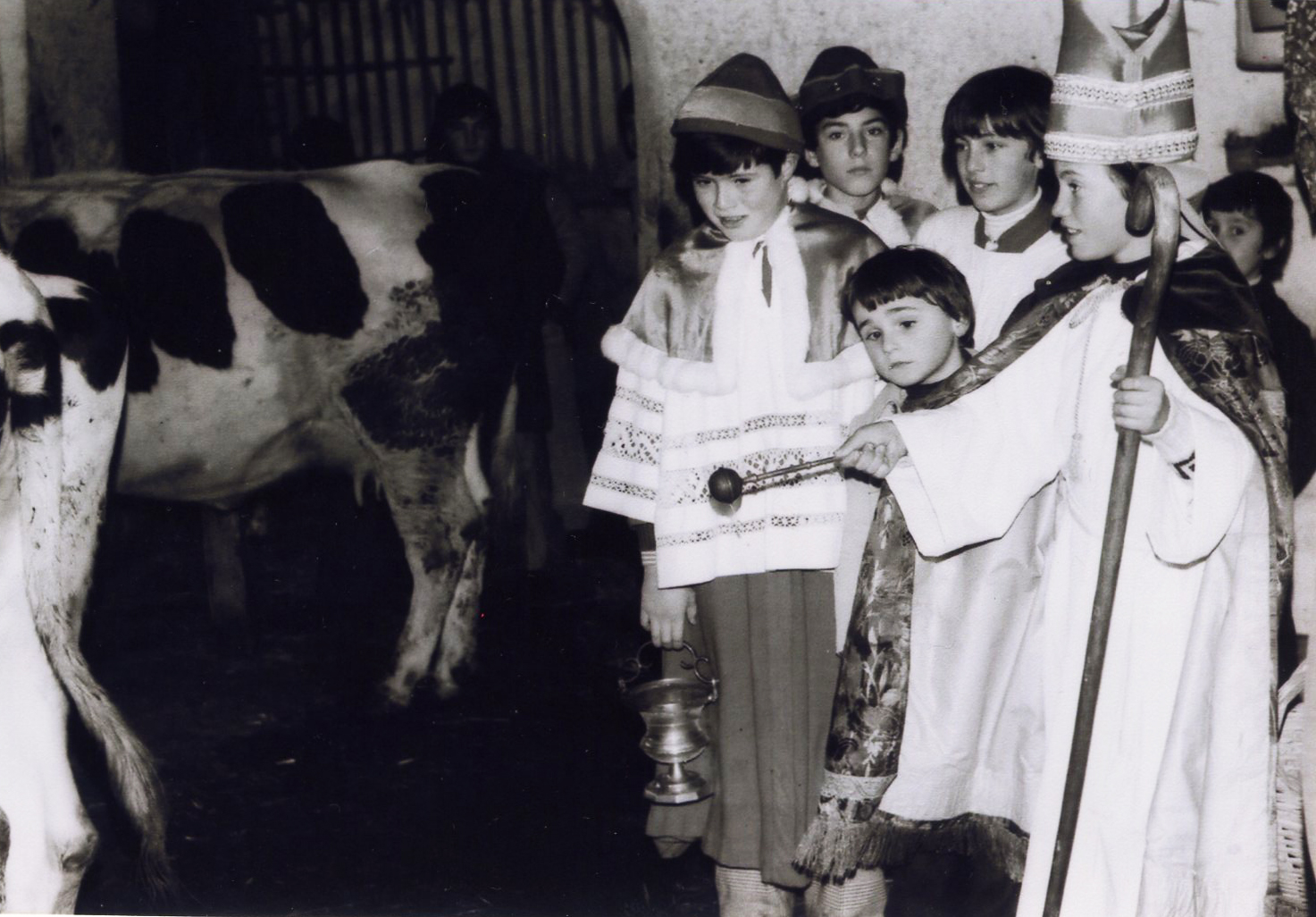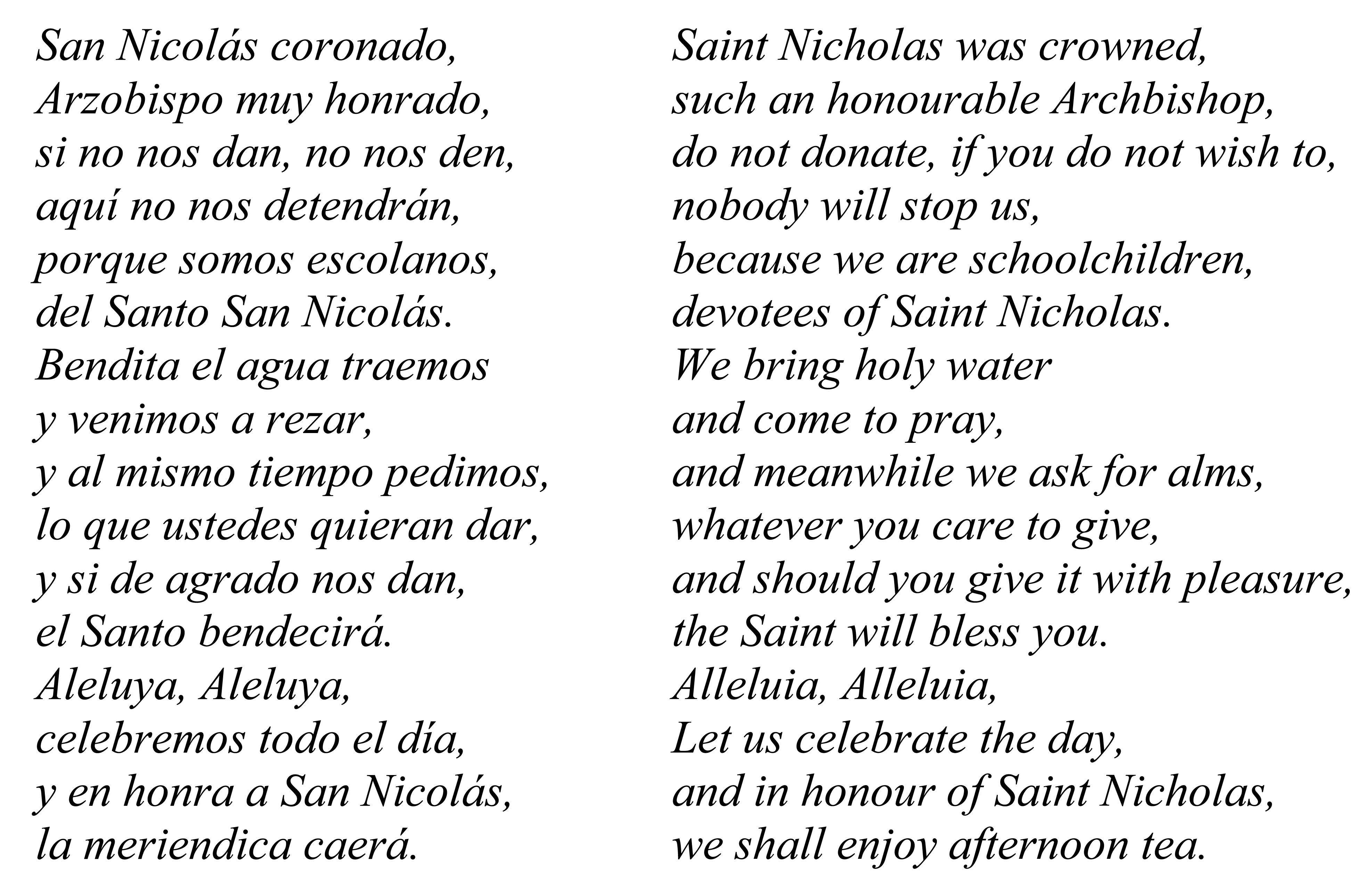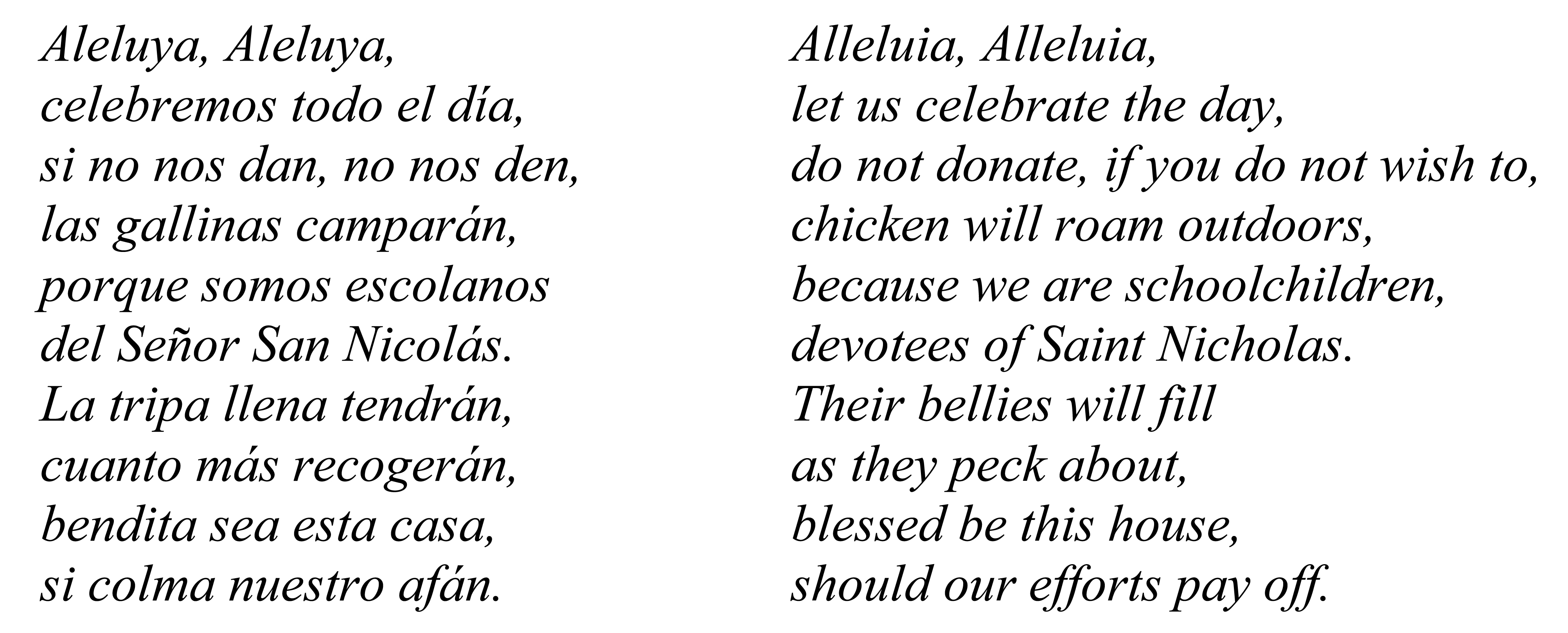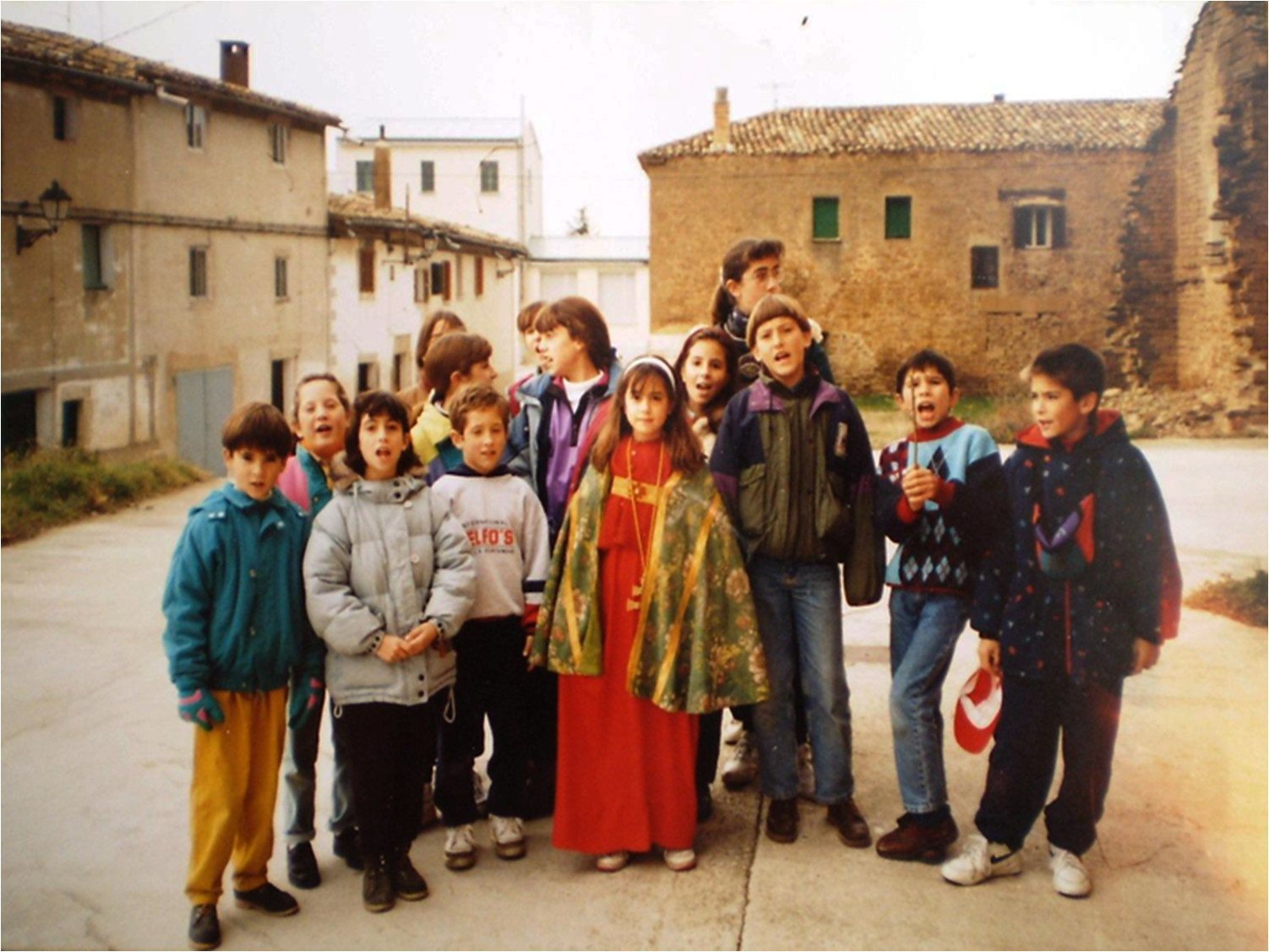Basque ethnography at a glance
On 8 December 1977 the Boy Bishop of Muruzábal (Navarre) wore brand-new bishop’s gown, alb and fancy cope. The old robes were in such bad condition that schoolchildren had been unable to dress as bishops for the last two years. The full episcopal regalia included mitre and crozier. Two acolytes assisted the boy bishop: one carried the holy water vessel and sprinkler, and the other a tin money can reading “Quien dé por San Nicolás, cien años vivirá” (which translates as “Whoever makes a donation on St Nicholas’ Day will live a hundred years”) to collect alms from their neighbours. As a novelty on that year, an altar boy accompanied them carrying a bag full of mandarins, oranges and sweets to be shared out.
Why was the festivity held on 8 December St Nicholas’ Day being on 6 December? It was the children themselves who decided to change the date. The catchment area policy obliged them to attend Puente la Reina state school, and the special children’s service could not thus be celebrated on a schoolday. Now that St Nicholas’ Day is a feast day, there is no impediment for the ritual to take place on the day.
The Our Father was recited at neighbourhood doors and livestock were blessed with holy water. Along the circuit the children would sing a popular song. Here is a version of it:
An elderly neighbour completed the song with further verses from his childhood:
The election of youth bishops and their comrades was not arbitrary. The oldest schoolchildren took a leading role during the festival, and the whole class joined in the meal. For the children of Muruzábal, it was indeed a rite of passage into early adolescence.
Nowadays, the Nicholas Bishop practice has been eagerly revived and updated in several localities of Navarre. Girls can become girl bishops these days, something unthinkable in the past. North to south let us recall the youth bishops of Burgui, Urzainqui and Uztárroz in the Roncal Valley; Lanz, Larraona; Garínoain, Barásoain and Olleta in Valdorba; Muruzábal and Enériz in Valdizarbe; Sada in Sangüesa; and Pitillas and Murillo el Fruto.
M.ª Amor Beguiristáin – Etniker Navarre – Etniker Euskalerria Groups
Translated by Jaione Bilbao – Language Department – Labayru Fundazioa





